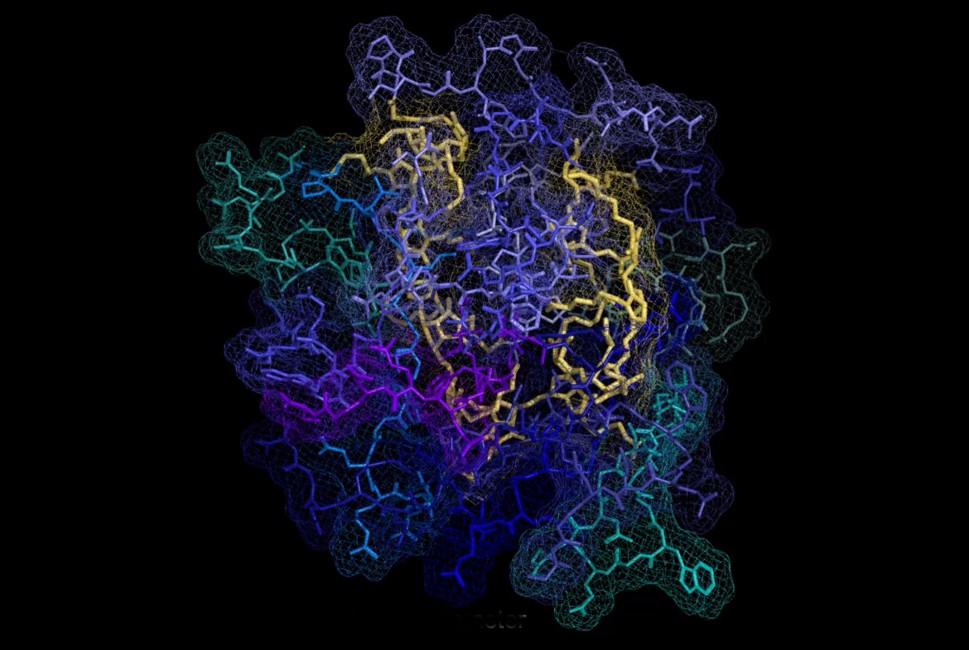Nanotechnology at Northwestern, News
New Huntington’s treatment prevents protein aggregation
November 01, 2024

The new treatment leverages peptide-brush polymers, which act as a shield to prevent proteins from binding to one another. The polymer backbone is shown in yellow. Active peptides are blue and green.
Designer polymers disrupt protein interactions to preserve cell health in mouse study
Scientists at Northwestern and Case Western Reserve universities have developed the first polymer-based therapeutic for Huntington’s disease, an incurable, debilitating illness that causes nerve cells to break down in the brain.
Patients with Huntington’s disease have a genetic mutation that triggers proteins to misfold and clump together in the brain. These clumps interfere with cell function and eventually lead to cell death. As the disease progresses, patients lose the ability to talk, walk, swallow and concentrate. Most patients die within 10 to 20 years after symptoms first appear.
The new treatment leverages peptide-brush polymers, which act as a shield to prevent proteins from binding to one another. In studies in mice, the treatment successfully rescued neurons to reverse symptoms. The treated mice also experienced no significant side effects, confirming the therapy is nontoxic and well tolerated.
Read the full story at Northwestern Now.